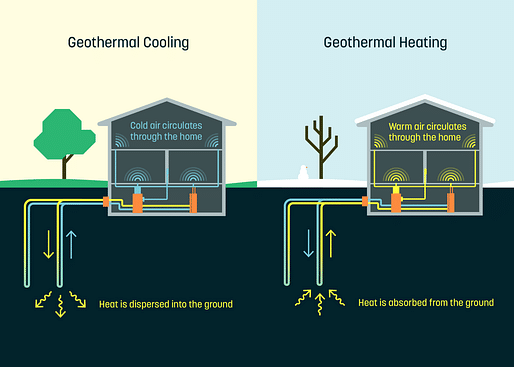

Google parent Alphabet is spinning off a little-known unit working on geothermal power called Dandelion, which will begin offering residential energy services. [...]
Dandelion chief executive Kathy Hannun said her team had been working for several years "to make it easier and more affordable to heat and cool homes with the clean, free, abundant, and renewable energy source right under our feet," and that the efforts culminated with the creation of an independent company outside of Alphabet.
— phys.org
"In the U.S., buildings account for 39% of all carbon emissions, mostly from the combustion of fossil fuels for heating and cooling," Dandelion CEO Kathy Hannun explains on the company's blog. "In the Northeast, heating and cooling is particularly carbon-intensive due to the relatively high use of fuel oil or propane as a heating fuel. This also leads to unpredictable costs for homeowners; if fuel prices rise during a particularly long and cold winter, their wallets take a hit."
Hannun describes how designing a better drill was the key to reducing cost, time, hassle, and environmental impact of the drilling process: "After months of testing, we hit upon a design for a fast, slender drill that hit our objectives. It could drill just one or two deep holes just a few inches wide, and compared to typical installation rigs, it produced less waste and took up much less space as it operated. It left a typical suburban backyard relatively undisturbed, so we could minimize landscaping costs for homeowners. Just as importantly, it was fast; we could install all the ground loops in less than a day, instead of the more typical 3 or 4 days."
For now, Dandelion will be offering its geothermal heating and cooling systems only in Upstate New York.
5 Comments
but... does it work? Or is it just another half-developed Google/MIT student concept getting press? (Colorful renderings make me think the latter)
what does work, geothermal? yes, it does. What they got wrong is the cost, it's not in the drilling, it's in the plumbing and controlling.
Yes, geothermal works (and already does for many large projects) but Google has a bad habit of creating graphics based on articles they read and passing it off as real design work. Let me know when there's something tangible to show
It's cool this kind of research is happening. My admittedly limited experience with geothermal is that it never really gets warm enough OR cool enough. So I assume one needs supplemental systems as well.
Maybe a perfectly designed and installed system works, but I have yet to see one that is efficient. Large electric-motor driven pumps running 24/7/365 require vast amounts of electricity (price varies regionally) and wear out regularly.
Open loop systems - cheaper to install - are problematic in many ways and often clog with sediment that stops the systems and destroys heat exchangers. When cleaned they pump noxious chemicals into ground water. Closed loop systems are much more expensive to install but are still reliant (as per Donna) on minimal temperature differences for heat extraction (low efficiency). These systems typically work better for cooling and become glorified electric heaters under certain conditions. The Internet is littered with conversations about huge electric bills for running these systems.
Here in Paradise these systems are all but required by code for "energy efficiency", apparently the result of a large lobbying effort that paid off handsomely. This was done instead of reducing house size (20k sf max) or any number of other things that would have reduced energy use. Most 'high-end' spec builders plumb for gas boilers that are installed after the C/O is received.
Block this user
Are you sure you want to block this user and hide all related comments throughout the site?
Archinect
This is your first comment on Archinect. Your comment will be visible once approved.